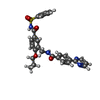Entry Database : PDB / ID : 3wmhTitle Human PPAR gamma ligand binding domain in complex with a gammma selective synthetic partial agonist MEKT75 Peroxisome proliferator-activated receptor gamma Keywords / / Function / homology Function Domain/homology Component
/ / / / / / / / / / / / / / / / / / / / / / / / / / / / / / / / / / / / / / / / / / / / / / / / / / / / / / / / / / / / / / / / / / / / / / / / / / / / / / / / / / / / / / / / / / / / / / / / / / / / / / / / / / / / / / / / / / / / / / / / / / / / / / / / / / / / / / / / / Biological species Homo sapiens (human)Method / / / Resolution : 2.1 Å Authors Oyama, T. / Ohashi, M. / Miyachi, H. / Kusunoki, M. Journal : TO BE PUBLISHED Title : Human PPRR gamma ligand binding domain in complex with a gammma selective synthetic partial agonist MEKT75Authors : Oyama, T. / Ohashi, M. / Miyachi, H. / Kusunoki, M. History Deposition Nov 19, 2013 Deposition site / Processing site Revision 1.0 Nov 19, 2014 Provider / Type Revision 1.1 Mar 2, 2016 Group Revision 1.2 Nov 22, 2017 Group / Category / Item Revision 1.3 Nov 8, 2023 Group Data collection / Database references ... Data collection / Database references / Derived calculations / Refinement description Category chem_comp_atom / chem_comp_bond ... chem_comp_atom / chem_comp_bond / database_2 / pdbx_initial_refinement_model / struct_ref_seq_dif / struct_site Item _database_2.pdbx_DOI / _database_2.pdbx_database_accession ... _database_2.pdbx_DOI / _database_2.pdbx_database_accession / _struct_ref_seq_dif.details / _struct_site.pdbx_auth_asym_id / _struct_site.pdbx_auth_comp_id / _struct_site.pdbx_auth_seq_id
Show all Show less
 Yorodumi
Yorodumi Open data
Open data Basic information
Basic information Components
Components Keywords
Keywords Function and homology information
Function and homology information Homo sapiens (human)
Homo sapiens (human) X-RAY DIFFRACTION /
X-RAY DIFFRACTION /  SYNCHROTRON /
SYNCHROTRON /  MOLECULAR REPLACEMENT / Resolution: 2.1 Å
MOLECULAR REPLACEMENT / Resolution: 2.1 Å  Authors
Authors Citation
Citation Journal: TO BE PUBLISHED
Journal: TO BE PUBLISHED Structure visualization
Structure visualization Molmil
Molmil Jmol/JSmol
Jmol/JSmol Downloads & links
Downloads & links Download
Download 3wmh.cif.gz
3wmh.cif.gz PDBx/mmCIF format
PDBx/mmCIF format pdb3wmh.ent.gz
pdb3wmh.ent.gz PDB format
PDB format 3wmh.json.gz
3wmh.json.gz PDBx/mmJSON format
PDBx/mmJSON format Other downloads
Other downloads 3wmh_validation.pdf.gz
3wmh_validation.pdf.gz wwPDB validaton report
wwPDB validaton report 3wmh_full_validation.pdf.gz
3wmh_full_validation.pdf.gz 3wmh_validation.xml.gz
3wmh_validation.xml.gz 3wmh_validation.cif.gz
3wmh_validation.cif.gz https://data.pdbj.org/pub/pdb/validation_reports/wm/3wmh
https://data.pdbj.org/pub/pdb/validation_reports/wm/3wmh ftp://data.pdbj.org/pub/pdb/validation_reports/wm/3wmh
ftp://data.pdbj.org/pub/pdb/validation_reports/wm/3wmh
 Links
Links Assembly
Assembly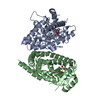
 Components
Components Homo sapiens (human) / Gene: PPARG / Plasmid: pET28a / Production host:
Homo sapiens (human) / Gene: PPARG / Plasmid: pET28a / Production host: 
 X-RAY DIFFRACTION / Number of used crystals: 1
X-RAY DIFFRACTION / Number of used crystals: 1  Sample preparation
Sample preparation SYNCHROTRON / Site:
SYNCHROTRON / Site:  SPring-8
SPring-8  / Beamline: BL38B1 / Wavelength: 1 Å
/ Beamline: BL38B1 / Wavelength: 1 Å Processing
Processing MOLECULAR REPLACEMENT
MOLECULAR REPLACEMENT Movie
Movie Controller
Controller





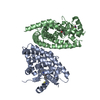
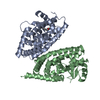
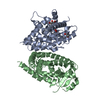

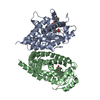
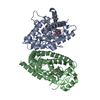
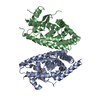
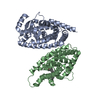
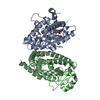
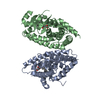
 PDBj
PDBj